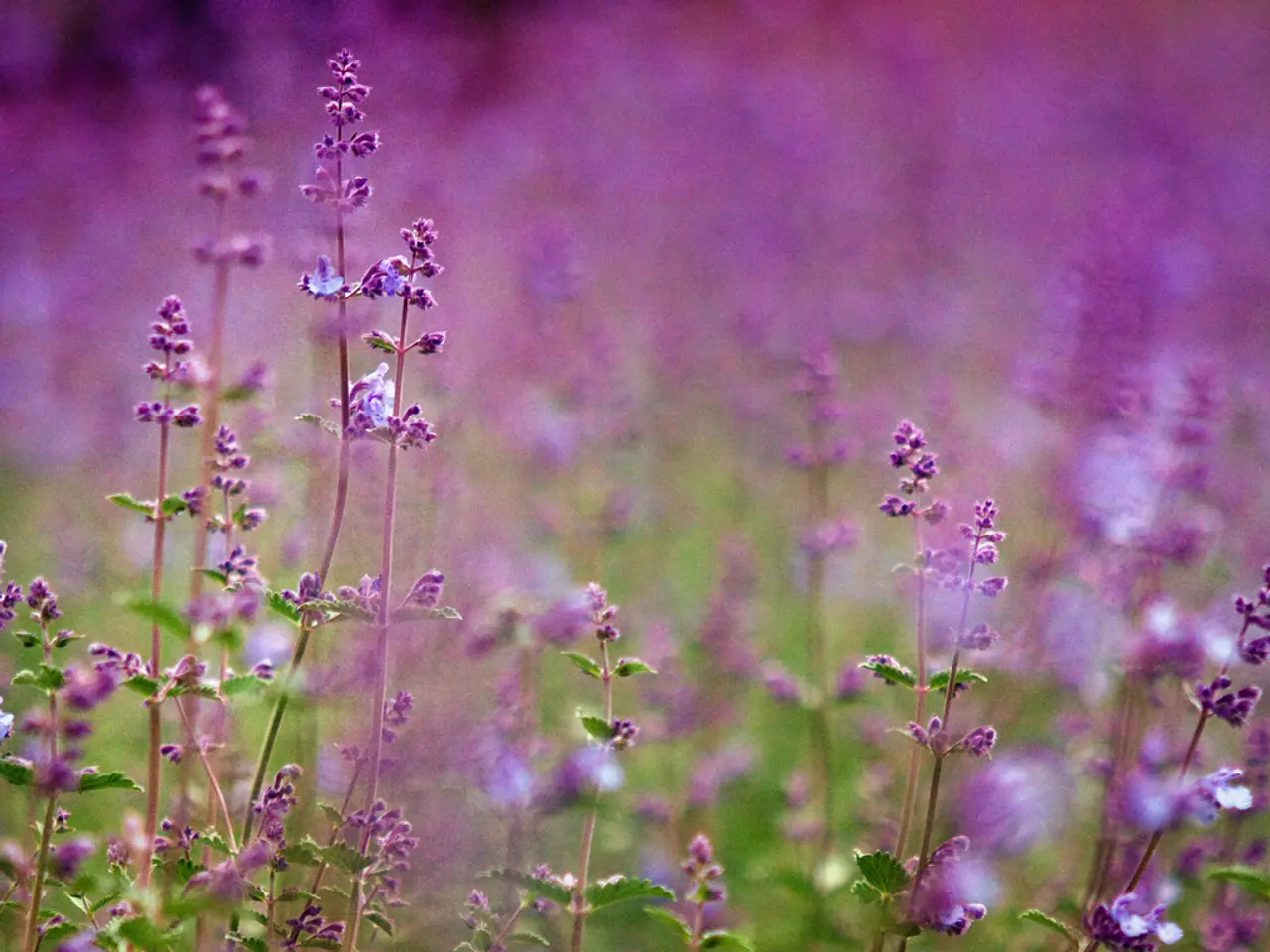Revitalizing Wilted Lavender Bushes: A Guide
Struggling to keep your lavender plant healthy and thriving? Here's a guide to help you identify common causes, symptoms, and solutions for reviving a dying lavender plant.
### Causes
Lavender plants may face several issues, including root-bound conditions, poor drainage or overwatering, inadequate air circulation, fungal infections, root rot, or blackened roots.
Root-bound plants occur when lavender's roots grow in tight spirals inside a pot, restricting nutrient uptake and water absorption, leading to decline. Poor drainage or overwatering can cause roots to rot, resulting in browning and dying of the plant. Inadequate air circulation increases the risk of fungal diseases, while fungal pathogens can cause leaf spots, yellowing, and general decline, especially in damp conditions. Root rot or blackened roots indicate the plant's inability to absorb water, often due to overwatering.
### Symptoms
Wilting or drying leaves, yellowing and dropping leaves, brown or blackened roots, decreased flowering and growth, dense root spiraling in pots, soft or brittle branches, and overall plant decline are common symptoms of a struggling lavender plant.
### Solutions for Reviving Lavender
To revive a dying lavender plant, consider the following solutions:
1. Repot into a larger container with fresh, well-draining soil to free roots and restore nutrient uptake if roots are bound. 2. Improve drainage by using sandy or rocky soil mix that drains quickly and avoid keeping the soil constantly wet. 3. Provide full sun and good airflow by placing lavender in a sunny spot with good ventilation to reduce fungal issues. 4. Check and prune roots carefully, removing any blackened or rotting roots. 5. Reduce watering frequency by watering only when soil is dry to the touch, as lavender prefers drier conditions. 6. Prune dead or diseased parts to encourage new growth. 7. Avoid excessive fertilizer, as lavender doesn't need rich soil and too much fertilizer can harm it.
### Additional Tips
- To correctly water potted lavender, soak the soil well and allow the top inch to dry out completely before watering again. - Growing lavender in pots requires special considerations, such as avoiding over or underwatering, using consistent soil, protecting from too much sunlight, and possibly fertilizing. - Mature lavender can tolerate lows of 10 degrees F. (-12 C.), while newly planted lavenders may succumb to temperatures below 40 degrees F. (4 C.) at night. - Potted lavender may need protection from cold temperatures by being moved into a garage, covered, or mulched heavily. Mulch can be purchased at Home Depot.
By addressing root health, watering practices, and the plant's environment, you can often revive a lavender plant before it dies completely. If fungal disease is suspected from prolonged damp or poor airflow, improving conditions and pruning affected areas can help reduce spread.
[1] University of California Agriculture and Natural Resources. (2014). Lavender: A Guide for Home Gardeners.
Afteridentifying the problems with your lavender plant, revive it by repotting it in a larger container with well-draining soil to free the roots, as root-bound conditions can restrict nutrient uptake. Improve drainage by using a sandy or rocky soil mix to prevent overwatering, which can cause root rot and subsequent browning and dying of the plant. In home-and-garden projects, consider the lavender's lifestyle, providing it with full sun, good airflow, and well-drained soil to minimize fungal diseases and promote growth. With some care and attention, you can restore your home-and-garden lavender plant to its vibrant, fragrant best.




